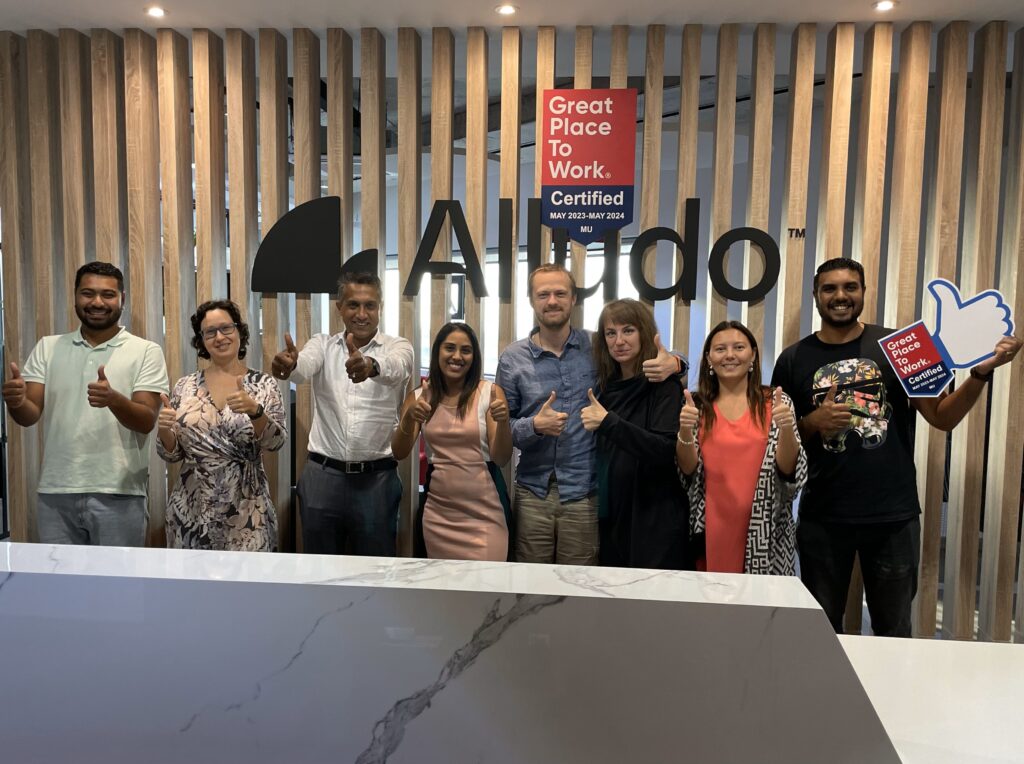As an organization, we take immense pride in creating a culture that fosters growth, innovation, and happiness. And now, we’ve got an official badge to prove it!
We are incredibly honored to announce that our Mauritius office has been certified as a “Great Place to Work” by the global authority on workplace culture – Great Place to Work®️. This esteemed certification recognizes employers around the world that excel in providing an outstanding employee experience.
So why is this certification a big deal, you ask?
Being certified as a “Great Place to Work” is not merely a title. It’s a testament to our commitment to providing an environment where every individual can flourish, both personally and professionally. It speaks of trust, camaraderie, and the shared values that resonate with every Alludian.

With offerings including a corporate volunteer program and dedicated wellness days, Alludo’s core philosophy revolves around fostering positive impacts and fueling a sense of well-being. Achieving this certification reinforces that we’re on the right track.
For those of you who aren’t familiar, the Great Place to Work Certification is no small feat. It recognizes employers who go above and beyond in creating an outstanding employee experience. Think of it as a Michelin Star for workplace culture! To be certified means we’ve been researched, scrutinized, and verified. The best part? This certification gives Alludo a recruiting advantage, showcasing our commitment to offering nothing but the best employee experience.
And while we’ve been certified until the end of May 2024, our commitment doesn’t stop there. We see this recognition not as the end goal but as a stepping stone. It motivates us to keep pushing boundaries, keep engaging in meaningful dialogues, and above all, keep prioritizing the well-being and happiness of our Alludians.